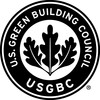The credit requirements excuse "previously developed" sites for 1) the 100-year floodplain and 2) within 50' of a water body. This is not specifically mentioned 3) within 100' of wetlands. Does anyone know? I have a project that is within 100' of a wetland, but the area on which we will be building/paving was entirely previously developed long ago. For that matter, we are likely digging up some of the paving and restoring it to natural habitat/wetland. Anyway, would appreciate any opinions on whether or not we can earn the point building within 100' of a wetland on land that was entirely previously developed? Thank you - Kris
You rely on LEEDuser. Can we rely on you?
LEEDuser is supported by our premium members, not by advertisers.
Add new comment
To post a comment, you need to register for a LEEDuser Basic membership (free) or login to your existing profile.



